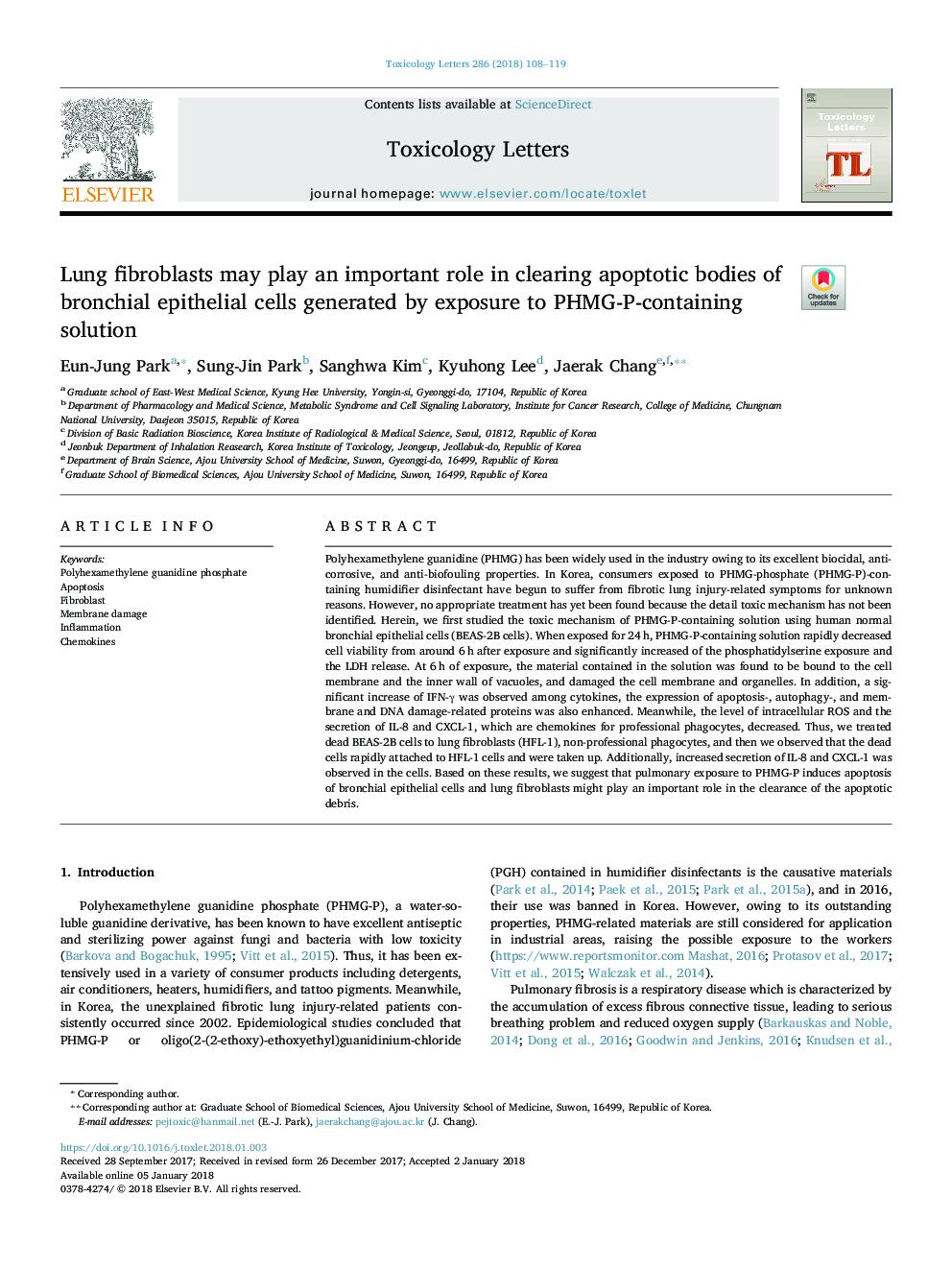| Article ID | Journal | Published Year | Pages | File Type |
|---|---|---|---|---|
| 8553419 | Toxicology Letters | 2018 | 12 Pages |
Abstract
Polyhexamethylene guanidine (PHMG) has been widely used in the industry owing to its excellent biocidal, anti-corrosive, and anti-biofouling properties. In Korea, consumers exposed to PHMG-phosphate (PHMG-P)-containing humidifier disinfectant have begun to suffer from fibrotic lung injury-related symptoms for unknown reasons. However, no appropriate treatment has yet been found because the detail toxic mechanism has not been identified. Herein, we first studied the toxic mechanism of PHMG-P-containing solution using human normal bronchial epithelial cells (BEAS-2B cells). When exposed for 24â¯h, PHMG-P-containing solution rapidly decreased cell viability from around 6â¯h after exposure and significantly increased of the phosphatidylserine exposure and the LDH release. At 6â¯h of exposure, the material contained in the solution was found to be bound to the cell membrane and the inner wall of vacuoles, and damaged the cell membrane and organelles. In addition, a significant increase of IFN-γ was observed among cytokines, the expression of apoptosis-, autophagy-, and membrane and DNA damage-related proteins was also enhanced. Meanwhile, the level of intracellular ROS and the secretion of IL-8 and CXCL-1, which are chemokines for professional phagocytes, decreased. Thus, we treated dead BEAS-2B cells to lung fibroblasts (HFL-1), non-professional phagocytes, and then we observed that the dead cells rapidly attached to HFL-1 cells and were taken up. Additionally, increased secretion of IL-8 and CXCL-1 was observed in the cells. Based on these results, we suggest that pulmonary exposure to PHMG-P induces apoptosis of bronchial epithelial cells and lung fibroblasts might play an important role in the clearance of the apoptotic debris.
Related Topics
Life Sciences
Environmental Science
Health, Toxicology and Mutagenesis
Authors
Eun-Jung Park, Sung-Jin Park, Sanghwa Kim, Kyuhong Lee, Jaerak Chang,
